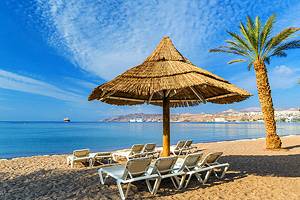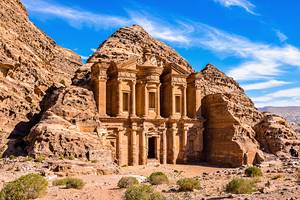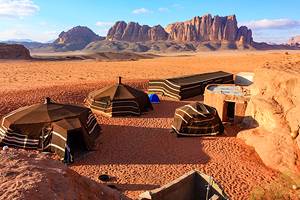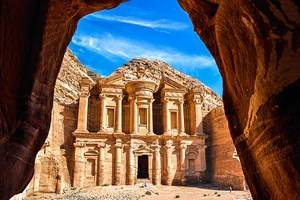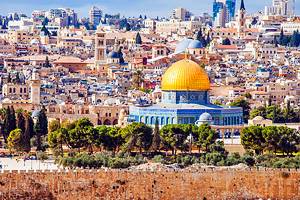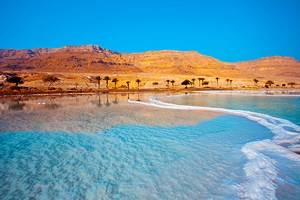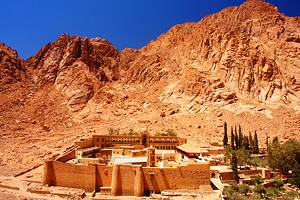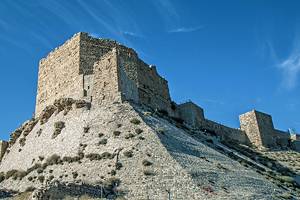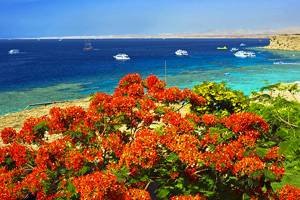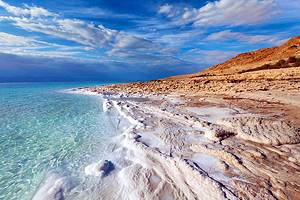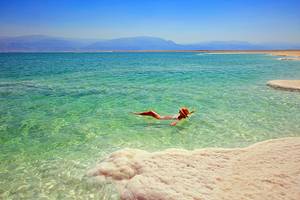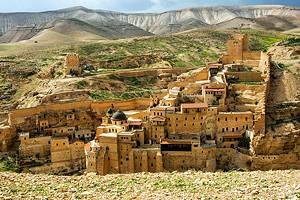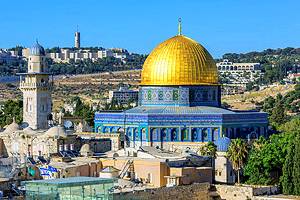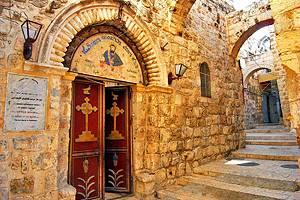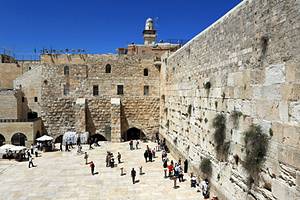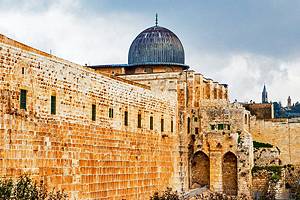Exploring Wadi Rum: A Visitor's Guide
Wadi Rum is Jordan's famous desert landscape and one of the country's best places to visit.
This rugged landscape's raw beauty has made it the country's major film star, playing leading roles in movies as diverse as The Martian (where it stood in for Mars) and Jordan's award-winning Theeb (where it played itself).
The movie it is most famous for is, of course, Lawrence of Arabia, which first flaunted Wadi Rum's panoramas of orange and pink sand desert loomed over by vast rock outcrops to a global cinema audience.
Today, visitors come to camel-ride, hike, or 4WD across the desert, and scrabble up the rock ridges and cliffs to soak up the scenery for themselves. Just being amid this grand landscape is the major tourist attraction, but the offered desert tour circuits take visitors to some of the most famous photography spots and rock formations.
If you want to experience Wadi Rum fully, camping overnight should be top of your things to do list while here.
On This Page:
History of Wadi Rum
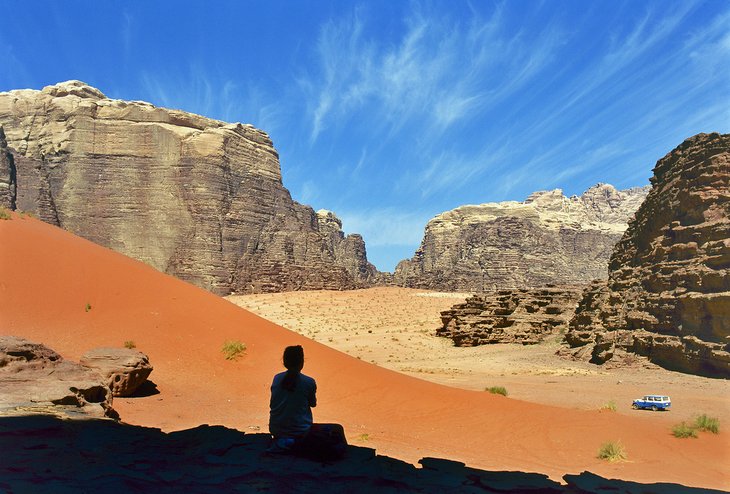
Wadi Rum's landscape of sandstone mountains was carved out by millennia of erosion, with wind and water slowly carving out the rock to create wadis (valleys) between.
Human habitation here can be dated back to the Neolithic era, but it was in the Iron Age, when Thamudic tribes from the Arabian Peninsula began using this area as part of their trade routes, that Wadi Rum's importance begins.
The Nabataeans had taken control of the desert by the 2nd Century BC as part of their trading empire, which stretched across much of this region of the Middle East. The area's importance, though, fades in later centuries.
During World War I's Arab Revolt, the Arab fighters led by Emir Faisal and T. E. Lawrence spent some time here, and Lawrence's book, The Seven Pillars of Wisdom, brought Wadi Rum to the attention of the world. It was the 1962 movie Lawrence of Arabia, with its sumptuous desert panoramas, though, that really kicked off interest in Wadi Rum's tourism potential.
Wadi Rum became a national park in the 1990s. The local Bedouin communities of Wadi Rum are closely involved with both managing the park and providing tourism activities for visitors.
Activities at Wadi Rum
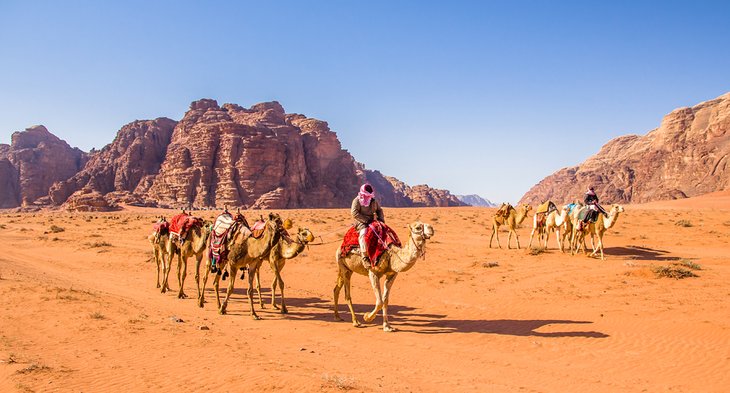
Wadi Rum is prime territory for travelers itching for adventurous things to do.
Activities and tours of the national park can be arranged at Wadi Rum Visitor Center on arrival. The list of activities that can be organized quickly without any prior booking includes camel-trekking tours (ranging from a couple of hours to a full day), hikes of various lengths, and half- and full-day 4WD tours.
Hiking and camel-trekking tours allow for a slower, more close-up desert experience. If you want to cover all the major attractions within the national park area, the 4WD tour circuits are the easy option.
Overnight camping, combined with one of the activities and tours, can also be arranged on arrival at the center.
Wadi Rum is Jordan's top rock climbing area, and a couple of qualified local guides operating out of Rum Village offer rock climbing tours of several climbing routes across the cliffs and crags of the area. Specialized tours such as these should be booked in advance.
Camping at Wadi Rum
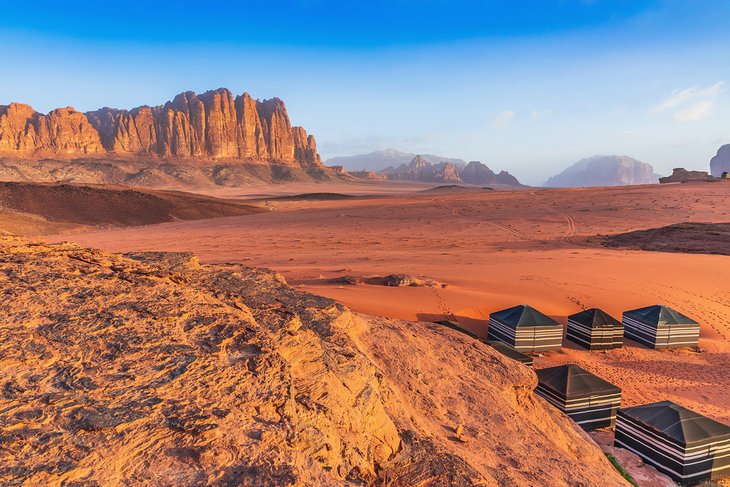
Although a Wadi Rum day trip offers up plenty of panoramic beauty, the best way to experience the desert scenery here is to stay a little longer and camp overnight.
An overnight Wadi Rum tour means you get to see the desert at sunset and sunrise, when the colors of the cliffs and crags, and sand below, mellow and shimmer in the changing light. With the lack of artificial light, the night sky here is phenomenal and offers some of the clearest stargazing you'll ever have the chance to see.
Several small Rum-Village-based and Bedouin-run tour companies have campsites within the park. These can be booked beforehand through their individual websites or on arrival at Wadi Rum Visitor Center.
The campsites are small and scattered throughout the park area. All offer a "glamping" experience, with individual tent accommodation (usually with actual beds) and a basic, shared bathroom block. Dinner and breakfast (and transport back to the Wadi Rum Visitor Center in the morning) is usually included in the overnight stay.
Note that overnight Wadi Rum tours booked with larger tour agencies that operate from Aqaba, Petra, and Amman usually don't use these campsites. Instead, they use campsites on the edge of Wadi Rum - not actually in the national park area.
The desert surrounding these large camps is not as dramatic as the scenery within the park, and the camps are sprawling affairs, as they're built to facilitate large tour groups.
Exploring the Park
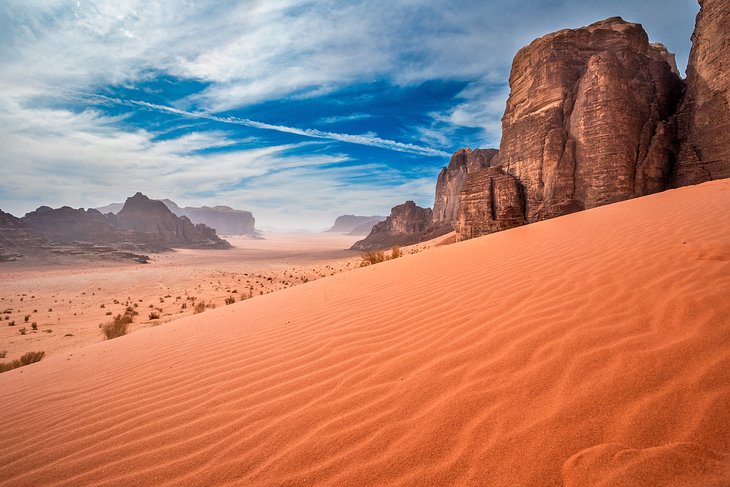
Wadi Rum's vistas, with expanses of sand streaked orange and pink between towering crags and weathered cliffs, is the main tourist attraction. Wherever you look here, you'll find desert vistas of otherworldly beauty.
There are, though, several specific attractions within the park, and most basic tours try to hit all, or at least, most of them.
Note that if you're hiking or camel trekking, you wouldn't be able to see all of the below on a half-day tour, as the distances between them are too large. Instead, you'd concentrate in one specific area and explore more fully.
Seven Pillars of Wisdom
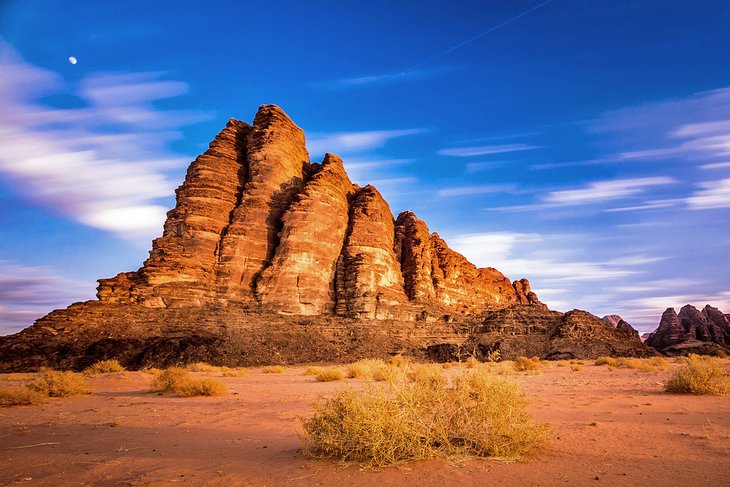
First off, this rock formation has nothing to do with T. E. Lawrence's book The Seven Pillars of Wisdom. The impressive crag was simply nicknamed this by local guides (like most other Wadi Rum features that have "Lawrence" in their name) to highlight Wadi Rum's "Lawrence of Arabia" association for tourism.
The crag with its flanks whittled away by wind and water into pillar-like shapes sits amid the sand very near to the Wadi Rum Visitor Center, at the beginning of Wadi Rum's national park area. There's an observation platform at the center that offers an excellent view of the formation.
Lawrence's Spring
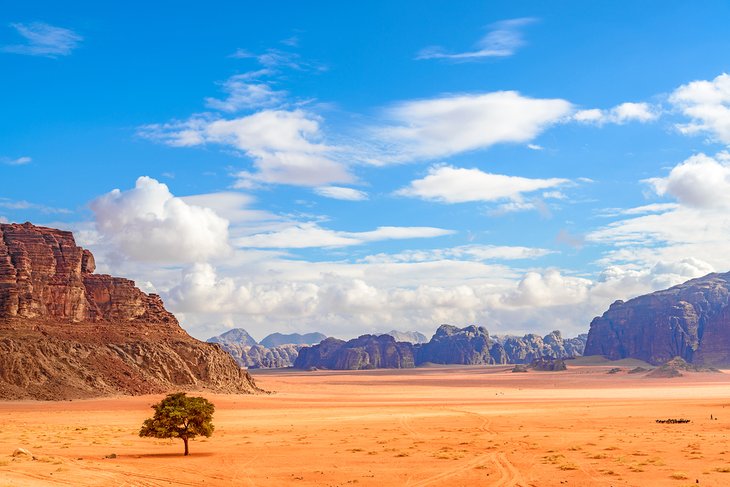
This natural spring area (proper name Ain Ash-Shalalah) is a regular stop on all Wadi Rum tour itineraries.
The spring itself could be the resting place mentioned in T. E. Lawrence's Seven Pillars of Wisdom, but the area's literary connection only plays a small part in its popularity on the Wadi Rum circuit.
The views from the spring area, across the vast plateau of sand stretching out to a frame of rock outcrops in the distance, is one of Wadi Rum's most famous panoramas.
The spring area itself is shaded by trees and backed by a cliff where you can see some ancient inscriptions on the rock face.
Khazali Canyon
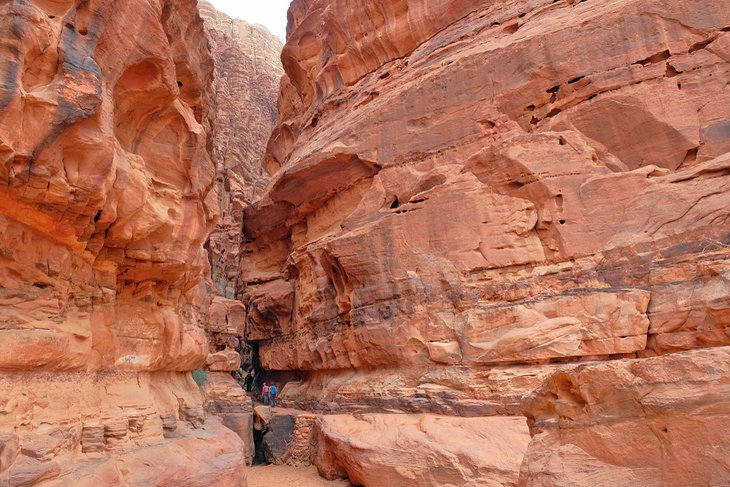
The narrow fissure of Khazali Canyon (Khazali Siq) slices through a massive crag formation. It is particularly photogenic for its sandstone surface of rippling ridges, which are reminiscent of dripping candle wax.
The sand at the entrance to the canyon is streaked in pink and orange and marked by one lonely fig tree.
Inside the canyon, the high walls provide shade from the sun, and it's deliciously cool. The initial 200 meters can be easily explored on a short walk, and the rock faces inside are home to several Thamudic rock inscriptions that show that Khazali Canyon has been used as a place of shelter since ancient times.
Lawrence's House
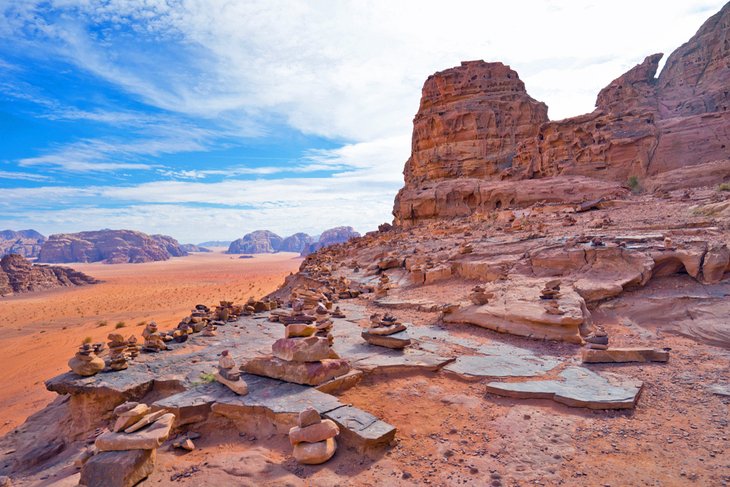
The ruins known as Lawrence's House (Al-Qusair) are said to have been where T. E. Lawrence once camped, though the remnants here, on a ridge above the desert plateau, are actually the scant remains of a Nabataean water cistern.
The main reason 4WD tours all stop here, though, is for travelers to admire the scenery and take photos of the surrounding desert view.
If the sweeping panorama of multi-hued desert sand, bordered by lofty mountains and crags, looks vaguely familiar, that's because you've probably seen it before. This particularly beautiful shot has been used in many films, including one of the most famous scenes in Lawrence of Arabia.
Burdah Rock Bridge
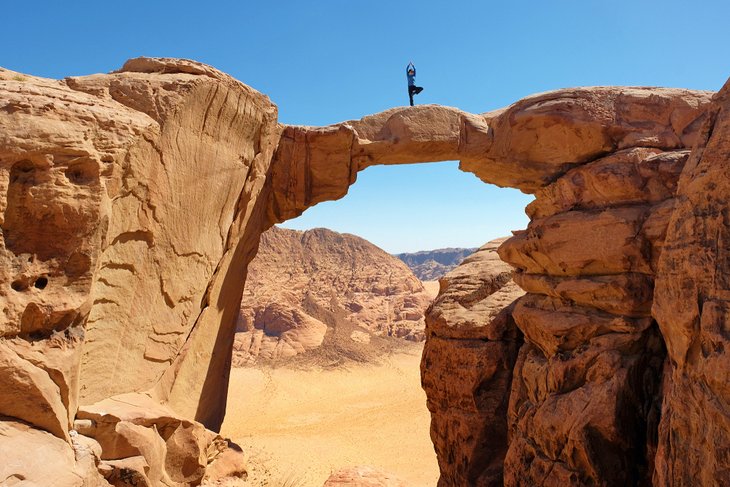
Burdah is the highest of three natural arches in the Wadi Rum area, created by wind and water erosion whittling away the softer surrounding rock.
You'll need to be a decent hiker and scrambler to reach the rock bridge, as it is perched at the summit between two rock formations, around 80 meters high.
The views from the top are worth the sweat, though you'll also need to have a good head for heights as you walk across the narrow arch between summits.
Don't attempt this hike in the heat of the day. It's best to strike out in the early morning, so it's a good add-on activity after an overnight at a Wadi Rum camp.
Rock Inscriptions
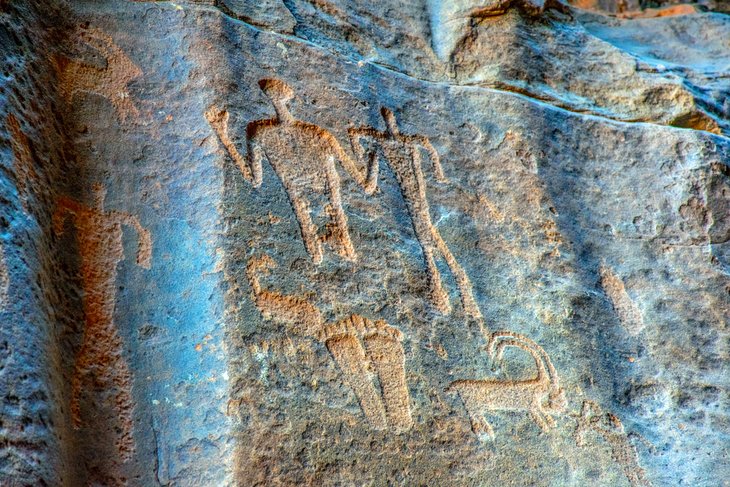
There are several well-preserved rock inscriptions in the Wadi Rum area, most dating from the pre-Islamic Nabataean and Thamudic tribe eras.
The most popular one to visit is the Anfaishiyya Inscription, where the rock face is scratched with highly detailed petroglyphs depicting camel-riders, warriors, and various animals.
If you have a particular interest in petroglyphs, it's well worth making sure to add the much less visited Alameleh Inscriptions into your itinerary. This is in the Diseh area, on the edge of Wadi Rum's national park area, so it's not normally included in a typical Wadi Rum 4WD circuit tour.
The petroglyphs here are the best preserved in the Wadi Rum desert area and portray camel caravans, hunting parties, and desert animals.
There are also several highly detailed petroglyphs inside Khazali Canyon, including depictions of female figures and small pairs of feet.
Umm Fruth Rock Bridge
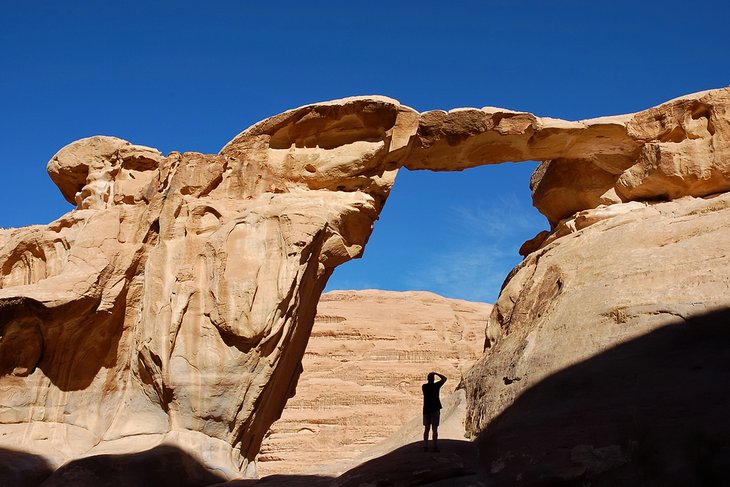
The most popular of Wadi Rum's three natural rock arches to visit and climb, Umm Fruth Rock Bridge can be summited by anyone with a good head for heights and a decent level of fitness.
It's only a short scramble from the base up the surrounding rock face to the top, from where you can then walk along the narrow bridge.
The bridge is near Wadi Rum's sand dune area and the Anfaishiyya rock face inscriptions, so the three can form a short 4WD itinerary (stops at all three are included in the typical itineraries of Wadi Rum half-day 4WD tours).
Sand Dunes
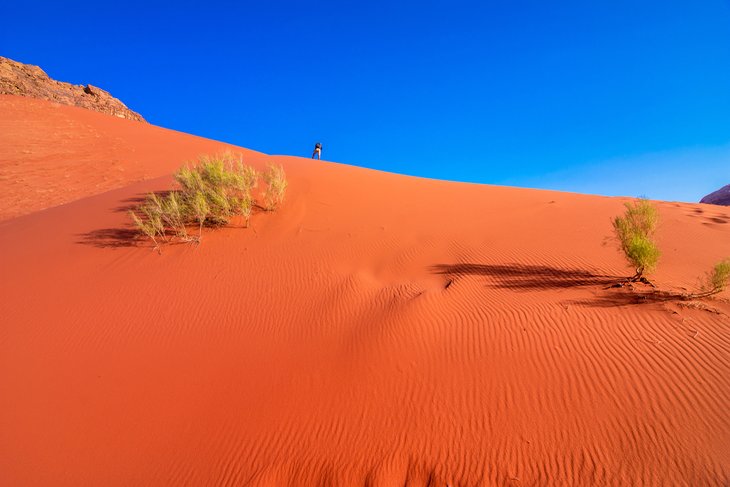
If you want to add some fun into your Wadi Rum tour, a visit to the main sand dunes area of the central desert area is a must.
The orange-hued dunes here are prime territory for speed racing down the sand slopes.
On a half-day afternoon 4WD tour of Wadi Rum, the sand dunes are usually one of the last stops, so that you're not attempting to scale the dune up to its summit in the worst heat of the day.
If the sand isn't too hot, it's usually easier to take your shoes off before the ascent and tackle the dune barefoot. Expect to get covered in sand on the descent back down to the base.
Tips & Tours: How to Make the Most of Your Time in Wadi Rum
- If you can, avoid summer visits when the desert heat is energy sapping. Early spring is the best time to visit, as this is when desert flora springs in colorful carpets across some of the sand plateaus.
- Make sure to buy water and snacks beforehand in Rum Village. There are no shops in the desert.
- Bring a sunhat and slather yourself in sunscreen. The sun is harsh here.
- Make sure you have small notes on hand for tipping any guides and/or drivers, as well as staff at the camps.
- The camps have generator electricity but make sure to charge phones and cameras before you get here.
- Wadi Rum's fine sand gets everywhere. If you're staying overnight, make sure to wrap any electronics in your luggage in protective covers. You'll be finding sand in your bag for weeks afterwards.


